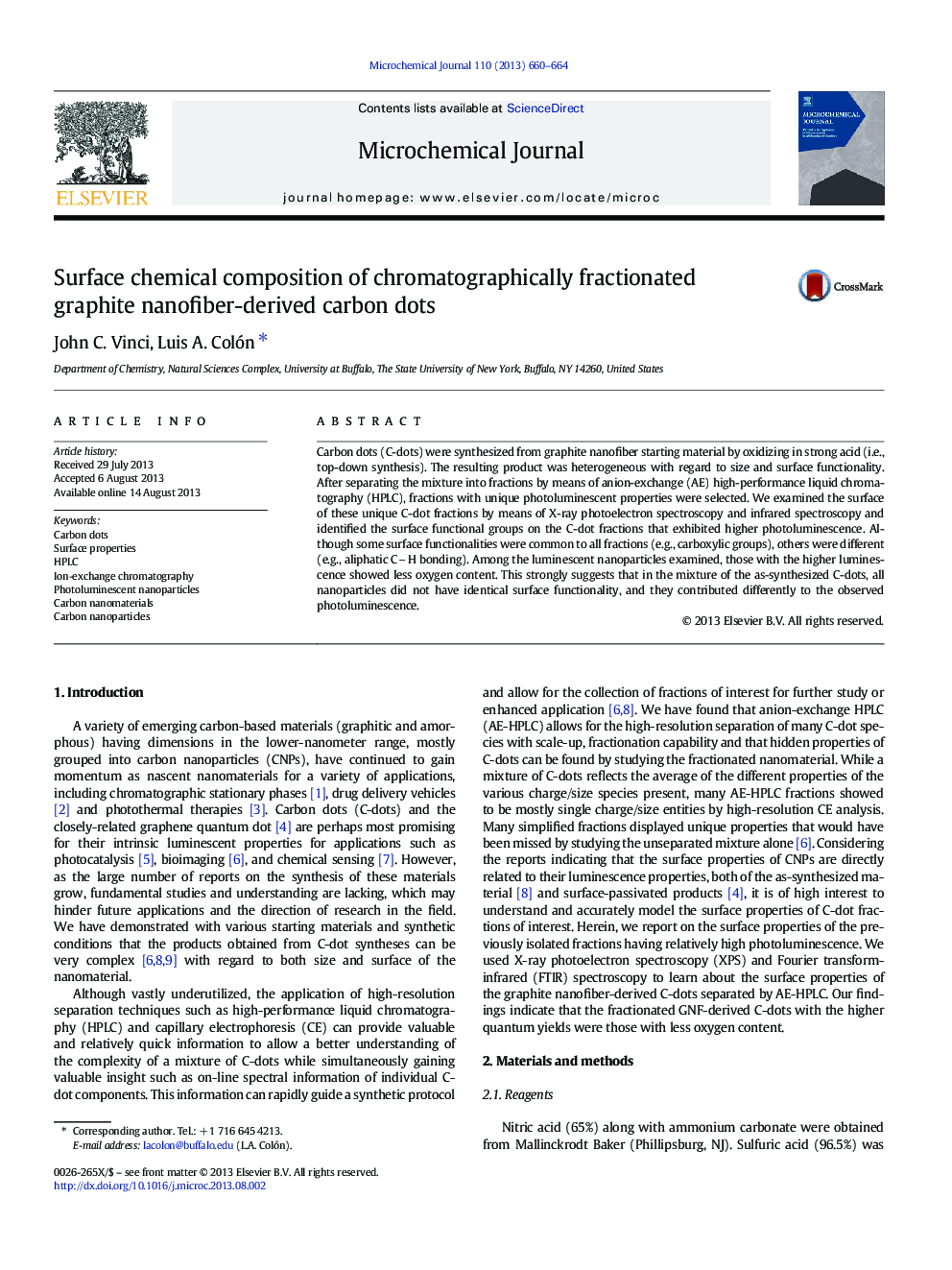| Article ID | Journal | Published Year | Pages | File Type |
|---|---|---|---|---|
| 7644154 | Microchemical Journal | 2013 | 5 Pages |
Abstract
Carbon dots (C-dots) were synthesized from graphite nanofiber starting material by oxidizing in strong acid (i.e., top-down synthesis). The resulting product was heterogeneous with regard to size and surface functionality. After separating the mixture into fractions by means of anion-exchange (AE) high-performance liquid chromatography (HPLC), fractions with unique photoluminescent properties were selected. We examined the surface of these unique C-dot fractions by means of X-ray photoelectron spectroscopy and infrared spectroscopy and identified the surface functional groups on the C-dot fractions that exhibited higher photoluminescence. Although some surface functionalities were common to all fractions (e.g., carboxylic groups), others were different (e.g., aliphatic CH bonding). Among the luminescent nanoparticles examined, those with the higher luminescence showed less oxygen content. This strongly suggests that in the mixture of the as-synthesized C-dots, all nanoparticles did not have identical surface functionality, and they contributed differently to the observed photoluminescence.
Keywords
Related Topics
Physical Sciences and Engineering
Chemistry
Analytical Chemistry
Authors
John C. Vinci, Luis A. Colón,
